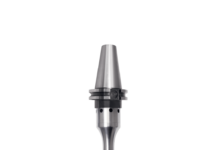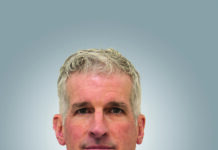Thielenhaus Microfinish Corporation designs and manufacturers finishing machines used by leading manufacturers worldwide to finish automotive components, refrigerator pumps, optical sensors, gas furnaces, and more. The company had customer requests for cost-effective and easy-to-run machines for smaller volumes yet still able to meet production demands. Thielenhaus developed a new, mid-sized machine based on MicroStar, its leading microfinishing product line. Thielenhaus did so by employing innovative engineering and by incorporating advanced components. This not only met the challenge but also resulted in a library of components that can be used in other projects.
Although probably everyone would like to have a Formula One racer, such vehicles are not generally affordable. They also may not be the best choice for a trip to the grocery store or for running errands around town. However, the technology found in racecars often makes its way into other models that deliver performance at a lower price. That is one reason why automakers are involved in Formula One and other racing circuits.
 A similar translation of technology lies behind a new product from Thielenhaus Microfinish. It, too, meets a need.
A similar translation of technology lies behind a new product from Thielenhaus Microfinish. It, too, meets a need.
“Everybody would like to have a sports car in the garage, but most of the time it comes down to practicality. That’s why we have identified a constant demand, many RFQs, for a smaller, simpler, less costly and easier-to-maintain machine,” said Holger Steinwender, design engineer at Thielenhaus Technologies GmbH.
The German parent of the U.S. subsidiary Thielenhaus Microfinish of Novi, Mich., has been building machine tools for almost 110 years. Among other products, it makes and sells fully automated, high production microfinishing machines. MicroStar, the company’s flagship product line, produces finishes with a flatness of 0.5 microns and a surface roughness a tenth that. For comparison, the diameter of a human hair is about 75 microns.
Thielenhaus products are used to make crucial automotive components such as fuel injectors. “Any kind of fuel injector will have been run through Thielenhaus machines at one point in its production,” Steinwender said.
The precision, smoothness and accuracy of the surface finish is critical to enabling cars to meet ever tighter emission standards. That’s why OEMs and Tier 1 auto parts suppliers turn to Thielenhaus systems to keep production on schedule. Manufacturers also employ the company’s microfinishing machines to make refrigerator pumps, optical sensors, gas furnace parts, and other components.
The company’s MicroStar is like a Formula One car where technology is pushed to the limit, and it is thus the choice for extremely challenging jobs. For instance, it can have as many as 12 work spindles. That makes it a high throughput machine best suited to high volume production and long production runs. Consequently, some manufacturers that could benefit from its microfinishing capabilities cannot justify its cost.
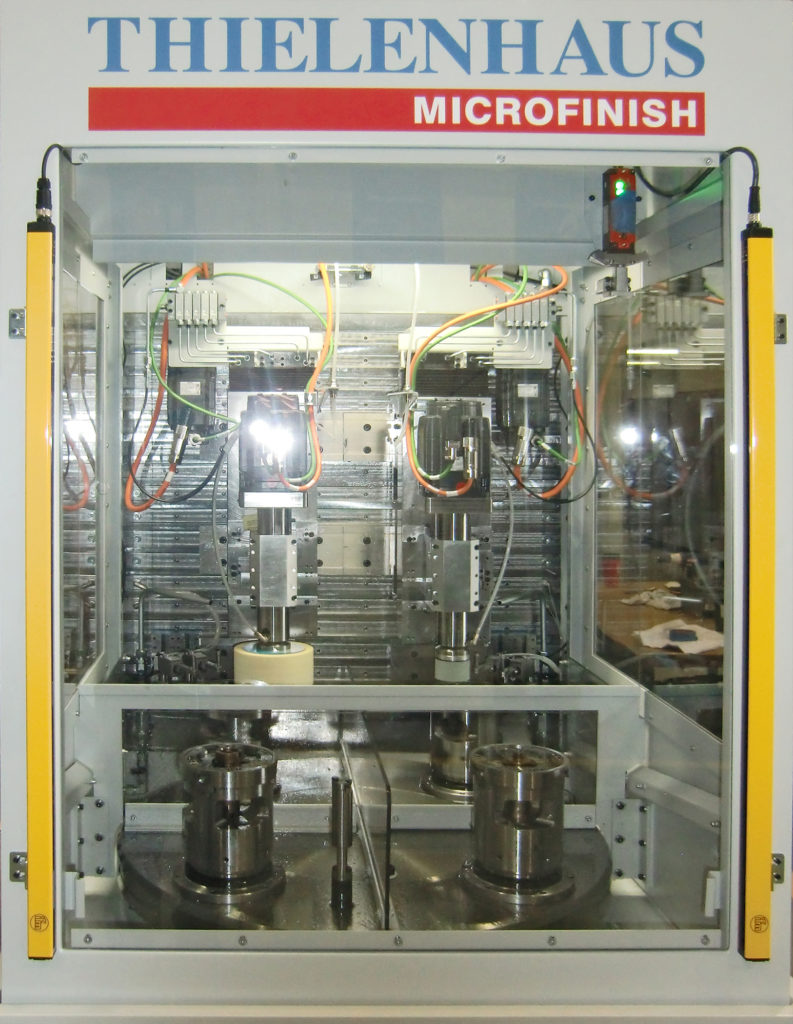 “Companies that run a job for two or three years, Tier 2 suppliers, cannot guarantee they will run the machine for 10 years like bigger companies can,” Steinwender said.
“Companies that run a job for two or three years, Tier 2 suppliers, cannot guarantee they will run the machine for 10 years like bigger companies can,” Steinwender said.
Thielenhaus did have a small system for very limited production runs. However, for this class of manufacturers it would have been too small while the MicroStar would have been overkill. “For a long time, we have not been able to respond to those RFQs because we did not have a smaller machine for the mid-sized suppliers,” Steinwender noted.
That’s why Thielenhaus set out to create a cost-effective, but still very capable microfinishing product. This would require some careful design choices. For instance, the company’s patented MicroSens technology reads the load on tooling during processing, one reason why the MicroStar can operate at a high throughput and still efficiently produce very flat and smooth surfaces. Any new Thielenhaus solution would need to retain such features because it would be essential to its microfinishing capability. Thus, any scaling down in the size and complexity of the machine had to done intelligently.
Designing and Building The Vehicle
In tackling this task, Thielenhaus designers had an overriding requirement: substantially reduce machine cost. Given lower target production volumes, achieving this by reducing throughput was acceptable.
Thielenhaus designers opted to decrease the number of work spindles. They evaluated the tradeoffs in terms of estimated machine cost and throughput impact. They decided to move from a maximum of 12 down to four work spindles. Capacity scaled down by the same ratio.
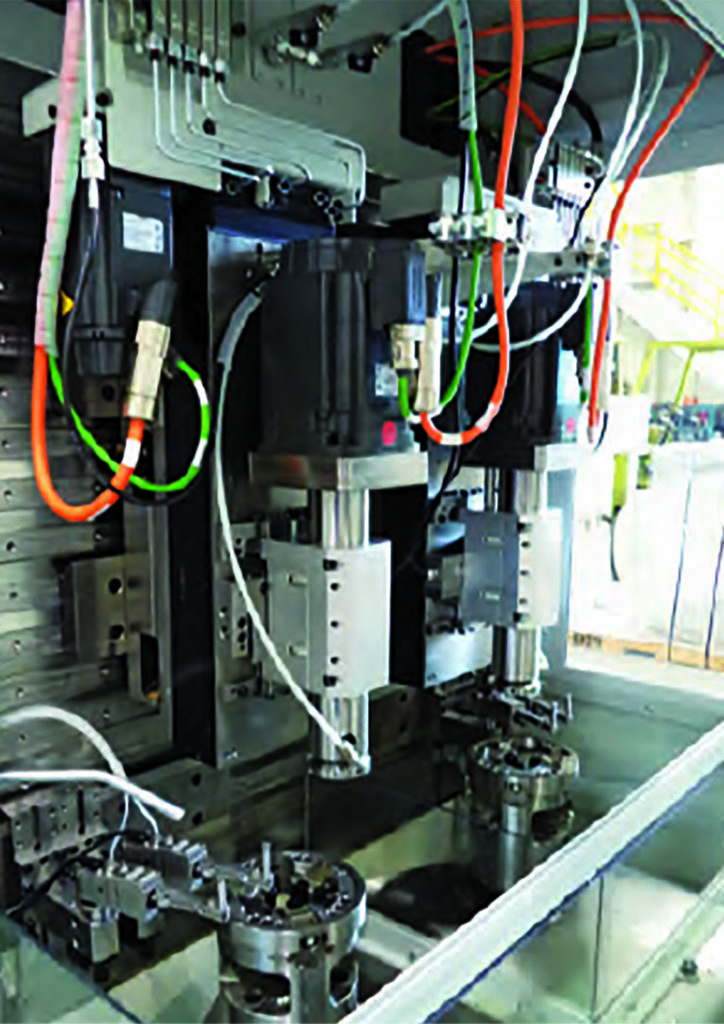 That left open other components such as the HMI, the controls, and the automation aspects, to intelligent innovation. Thielenhaus began looking for a partner, with an important part of the criteria determined by the need to fit within the available budget.
That left open other components such as the HMI, the controls, and the automation aspects, to intelligent innovation. Thielenhaus began looking for a partner, with an important part of the criteria determined by the need to fit within the available budget.
“Siemens was more price competitive than the other companies that we contacted,” Steinwender said in explaining the choice that was made.
This greater cost effectiveness was partly due to engineering and sub-assembly efficiency. For example, the Siemens S7 CPU and other components feature integrated safety, with drives, PLCs, and other modules talking to each other. One result of this capability is that the electrical package of the new machine could fit into one panel instead of the two required by its bigger counterpart. That reduced component count as well as build and commissioning time, eliminating expense.
Another instance of this improved cost effectiveness is found in the Simotics S synchronous motor and Sinamics S120 drive system, which has the DRIVE-CLiQ interface. This interface supports simple data communication among components, as well as integration of motors and encoder systems. The open interface also enables the connection of encoders and measuring systems from any manufacturer – all of which boost engineering efficiency.
Yet another example of improved efficiency is Siemens Distributed I/O PN/PN coupler. This allows serial machine deployment into a multi-machine integrator project by permitting the assignment of IP addresses to motors, drives and more without conflict.
A further benefit comes from the increased operational effectiveness made possible by these components. For example, placing servo motors on a common DC bus can lead to regenerative energy when braking, thereby improving efficiency.
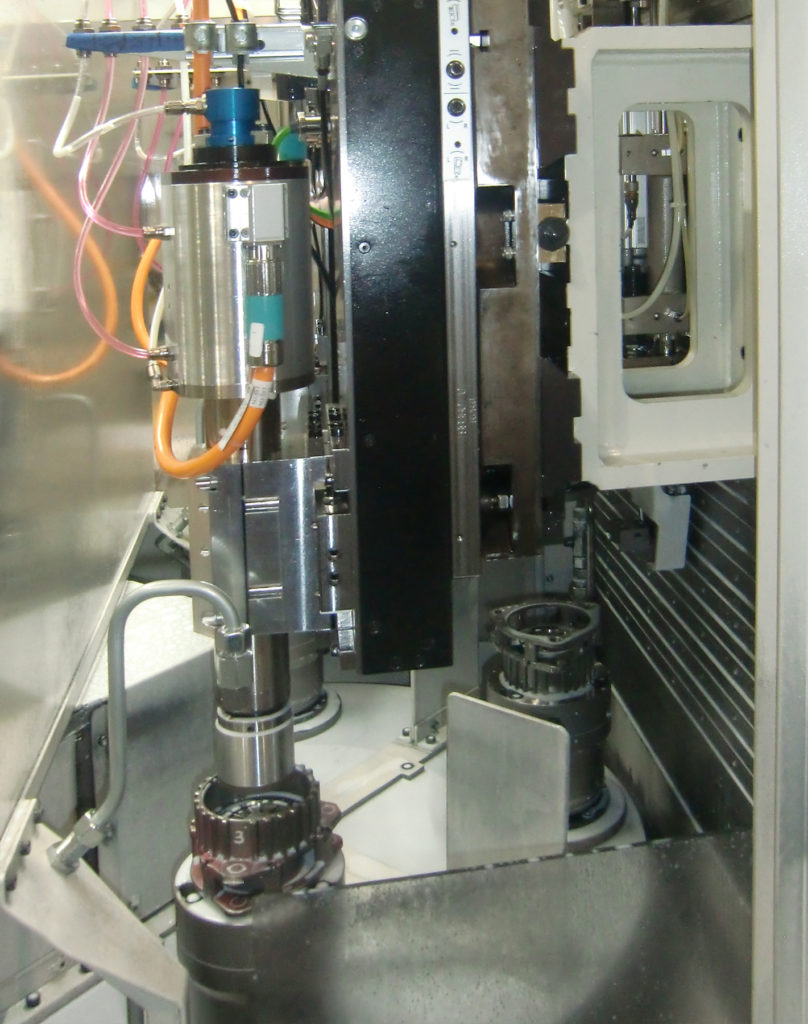 The new machine would need to offer improved operator friendliness, thereby requiring further engineering choices. Unlike the larger machine, the newer one would see more production and operator changeover, a consequence of the smaller and shorter production runs it targeted. Siemens Comfort Panel TP1200 allowed Thielenhaus designers to create an HMI with large intuitive pictures and easy-to- operate buttons on the touch screen, thereby enhancing operator friendliness.
The new machine would need to offer improved operator friendliness, thereby requiring further engineering choices. Unlike the larger machine, the newer one would see more production and operator changeover, a consequence of the smaller and shorter production runs it targeted. Siemens Comfort Panel TP1200 allowed Thielenhaus designers to create an HMI with large intuitive pictures and easy-to- operate buttons on the touch screen, thereby enhancing operator friendliness.
In addition to the technical and other advantages of its offerings, Siemens had a worldwide presence. Although the primary market for the new machine would be North America, it would be sold globally and supported out of Novi, Mich. Thus, it was important that the component supplier likewise have worldwide reach.
“We took our flagship, the work spindles, the tool spindles, all the moving components and put those into a nice, smaller package, together with simpler controls and fleshed it out with nice-to-have elements but nothing that you wouldn’t need to make the part. So, we came up with a cost-effective machine that delivers the renowned MicroStar quality with a great value- for-the-money,” Steinwender said in summing up the machine design process.
Compact and Still Capable
The resulting machine, the NanoStar R2, hits cost and time- to-deliver targets, coming in at roughly 50 and 40 percent less, respectively, than the MicroStar. At the same time, the NanoStar R2 offers some innovative features, with more to be added.
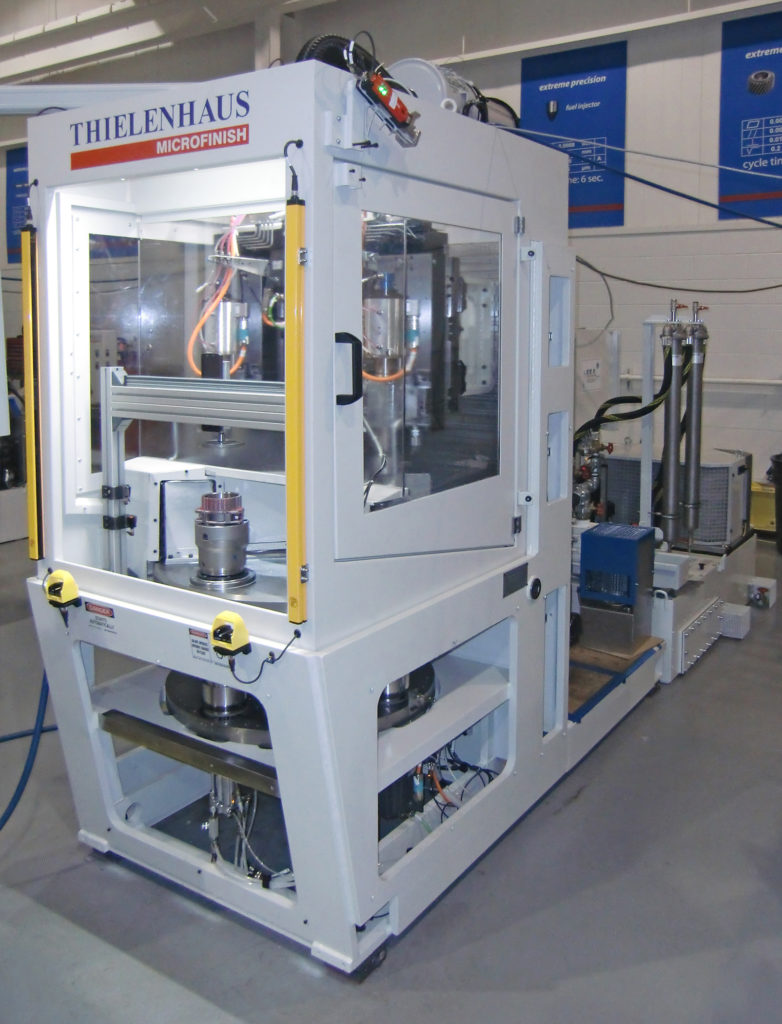 For instance, it measures force precisely, thanks to the technology employed. “Our machines have a load cell, a strain gauge, built into our tool slide and that detects when the tip of the tool touches a part,” Steinwender said.
For instance, it measures force precisely, thanks to the technology employed. “Our machines have a load cell, a strain gauge, built into our tool slide and that detects when the tip of the tool touches a part,” Steinwender said.
He noted that the machine itself may weigh tons but the tooling can detect a force of as little as 3 Newtons or roughly what’s exerted by a 0.6-pound weight. Because it is so sensitive, the machine can have tooling close on the surface being finished and detect the point of contact without any danger of crashing the tooling into the part being processed. That saves the part and the tooling. Therefore, it reduces operating expense. This sensitivity also boosts throughput because it maximizes processing speed while avoiding mishaps. The cycle time for the new machine varies by project, but at its speediest the processing time runs a few seconds per part.
Consequently, the machine enables manufacturers to process product at the lowest piece price on the market. It has attracted interest in North America, Europe and China. Besides the cost, the integrated safety has been a selling point. This makes the NanoStar R2 easy to set up and much simpler to adjust.
Plans are to scale the machine as needed in response to demand. That will be a simpler job because Thielenhaus has developed module and solution libraries that can be reused. These portfolios take advantage of Siemens Totally Integrated Automation (TIA), an open standards-based assembly of hardware and software.
Another coming attraction for Thielenhaus is the rollout of Mindsphere – the cloud-based, open IoT ecosystem from Siemens. This data-hosting platform will provide Thielenhaus with the device management, easy connectivity, and necessary data storage to be used in conjunction with existing cloud services for creating drive and energy analytics packages.
A Thielenhaus Microfinish electrical engineering manager, noted that this additional capability will benefit customers by increasing awareness of machine status. That information can then be used for energy management, resource optimization or predictive maintenance. Changes in cycle time, for example, can be detected and then appropriate actions taken.
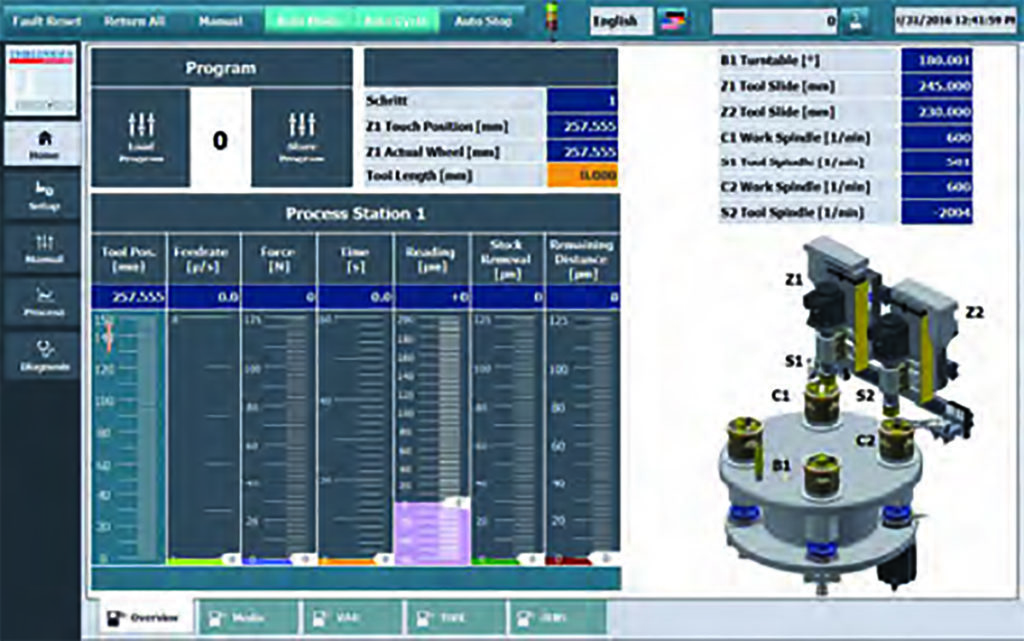 According to the engineer, “You’ll be monitoring parameters on a motor to see if it’s worn out or if the temperature is climbing,” He added that machine and process specific alerts could be set up, but that nothing has been determined yet beyond the desire to put the power of Mindsphere to work.
According to the engineer, “You’ll be monitoring parameters on a motor to see if it’s worn out or if the temperature is climbing,” He added that machine and process specific alerts could be set up, but that nothing has been determined yet beyond the desire to put the power of Mindsphere to work.
While that lies in the future, today the NanoStar R2 has already achieved its design goals. Although smaller, it still offers the exacting capabilities demanded by manufacturing customers. It can even be said to have surpassed requirements.
As Steinwender said, “So far it has fulfilled all our expectations. The accuracy is even better than what we had expected.”
About Siemens USA
Siemens Corporation is a U.S. subsidiary of Siemens AG, a global powerhouse focusing on the areas of electrification, automation and digitalization. One of the world’s largest producers of energy-efficient, resource-saving technologies, Siemens is a leading supplier of systems for power generation and transmission as well as medical diagnosis. With approximately 348,000 employees in more than 190 countries, Siemens reported worldwide revenue of $86.2 billion in fiscal 2015. Siemens in the USA reported revenue of $22.4 billion, including $5.5 billion in exports, and employs approximately 50,000 people throughout all 50 states and Puerto Rico.

